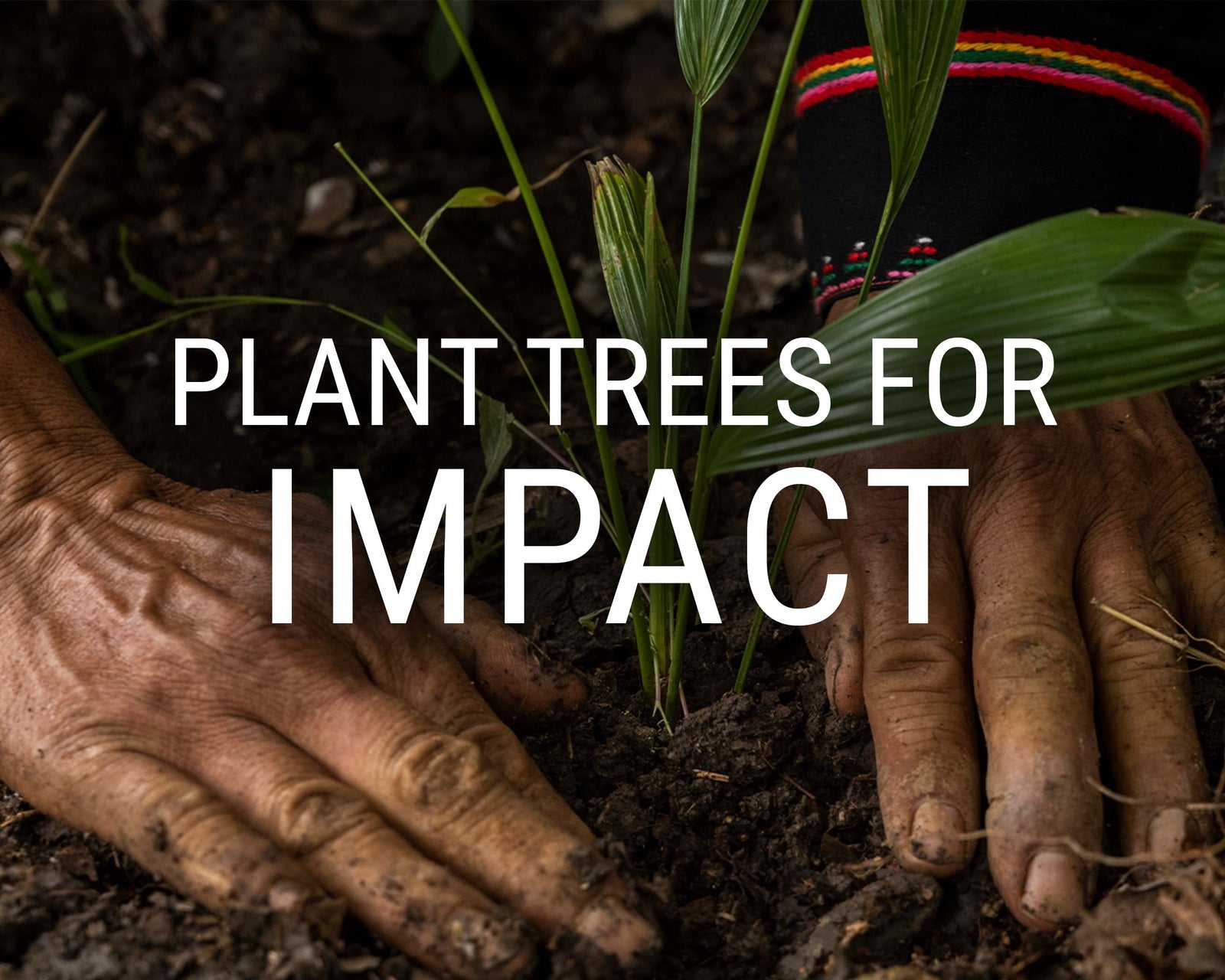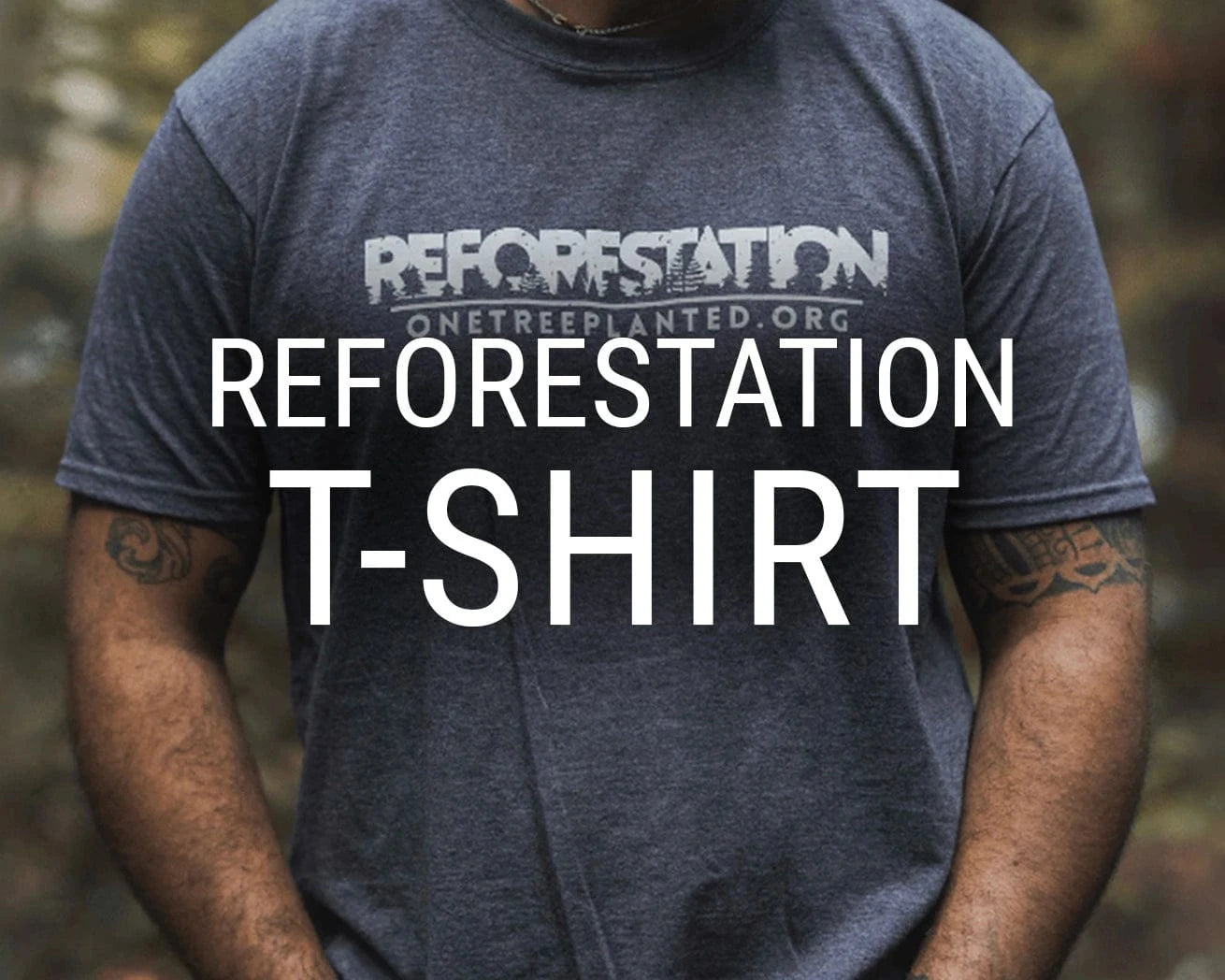Plant Trees
Plant trees for impact and help restore ecosystems around the world! Plant a Tree!

Plant trees for impact and help restore ecosystems around the world! Plant a Tree!
About
Stay up to date on major announcements, exciting collaborations, and more. Visit our Newsroom
We make it simple for anyone to plant trees, and together we can make an incredible impact. Learn more

Stay up to date on major announcements, exciting collaborations, and more. Visit our Newsroom

We make it simple for anyone to plant trees, and together we can make an incredible impact. Learn more
Get Involved
Become a business partner to improve your company’s sustainability initiatives and make an impact. Learn more
See how your support and leadership can help us fund reforestation efforts across the globe. Learn more

Become a business partner to improve your company’s sustainability initiatives and make an impact. Learn more

See how your support and leadership can help us fund reforestation efforts across the globe. Learn more
Learn
Read about stories from the field, interesting facts about trees and get your healthy dose of nature. Visit our blog
Comprised of lesson plans, learning modules, resources, and activities, our T.R.E.E.S. School Program is the perfect addition to your curriculum. Learn more

Read about stories from the field, interesting facts about trees and get your healthy dose of nature. Visit our blog

Comprised of lesson plans, learning modules, resources, and activities, our T.R.E.E.S. School Program is the perfect addition to your curriculum. Learn more
Shop
Our fan-favorite Reforestation T-Shirt. Wear it with pride to show your support of reforesting our planet, one tree at a time. Shop now
Give the gift that lasts a lifetime! Choose an image, write your personalized message and select a delivery date to gift a tree. Gift a tree

Our fan-favorite Reforestation T-Shirt. Wear it with pride to show your support of reforesting our planet, one tree at a time. Shop now

Give the gift that lasts a lifetime! Choose an image, write your personalized message and select a delivery date to gift a tree. Gift a tree

Is Reforestation the Silver Bullet for Climate Change?
June 15, 2020 4 min read
Is Reforestation the Silver Bullet for Climate Change?
Nope!
Reforestation has been getting a lot of attention lately, with some touting it as the #1 climate change solution, and others worrying that it's taking the spotlight away from other sustainability priorities. So we're here to set the record straight: we don't believe that planting trees is a cure-all for the planet's problem of pollution and climate change. There, we said it!
Trees deserve their moment in the sun, because planting ecologically appropriate seedlings in areas that have been deforested is an effective way to reclaim what has been lost and to restore cleaner air, water, and biodiversity. But while this is obviously our focus as a reforestation organization, we fully recognize that it must be considered in context of the bigger challenge at hand.
Think Holistically
Many scientists worry that in the wave of enthusiasm for getting trees in the ground, other, equally as important — but trickier to implement — actions are neglected. And they're right, because if we don’t reduce deforestation, phase out fossil fuels, and get our emissions under control, it may not matter how many trees are planted.
Scientists also worry that climate change effects like drought, disease, and wildfires will reduce the amount of carbon that forests are able to absorb over time. Conversely, changing climatic conditions may allow some trees to grow in previously unsuitable areas (particularly at high altitudes). While we can never truly predict the future, we can follow the data and learn what works and what doesn’t. What's clear is that while tree planting is greatly beneficial, it isn’t the only thing we should do. And promoting it as a silver bullet risks missing the forest for the trees. Instead we can think holistically. We must do all of it - better, faster, smarter.

So What Should We Do?
To keep our temperature increases below 1.5-2°C, we have to get to the roots of the problem — and unfortunately, they run deep. Taking bold action to protect existing forests and reduce GHG emissions is essential and should receive the same attention as restoration.
What else? Well, here's a start:
- Invest in renewable energy - including smart grids, batteries, and emerging technologies
- Support endangered wildlife through habitat conservation
- Halt fossil fuel extraction and any related subsidies
- Promote gender equality because women play a key role in addressing climate change
- Hold polluters accountable through taxes and revoked business licenses
- Facilitate the safe containment of greenhouse gas chemicals such as hydroflurocarbons
- Support direct action in communities working towards sustainability
- Protect and restore peatlands because they store enormous amounts of carbon
- Prioritize education in math, science, climate, and technology
- Eliminate corruption in politics because that results in terrible environmental policies
- Remove dams and restore riparian zones so that rivers can run healthier
- Promote democracy, equality, and climate justice for communities of color
Let's do this AND plant trees along the way.

Plant the Right Trees, The Right Way
When we do focus on reforestation, it's important not to simply plant trees anywhere just to say you did. Many factors need to be considered in order to ensure genuine environmental and social impact. That means making assessments of the land and current land use, knowing which local tree species are most suitable, having processes to scale seedling production at nurseries, developing a solid plan, and ensuring local staff or volunteers are on board, and that's all before a single tree is planted!
Including local communities is essential because it not only helps with project success and tree survival rates, it also reduces the risk of future deforestation. And besides, making sure we're having a positive social impact is just the right thing to do.
Some other things we consider:
- What tree species will help the new forest be resilient to the effects of climate change?
- How will the young trees be cared for in the first few years of life?
- Will the project comply with regulations set by local and regional governments?
- Are there any endemic wildlife species that require a particular food or habitat?
- Is there potential to meet certain carbon credit requirements?
- What are the potential challenges to the long-term success of this project?
- What other environmental activities are recommended alongside reforestation?
By planting trees thoughtfully we ensure that quality is prioritized over quantity and that reforestation is conducted with optimal benefit for nature, people, and wildlife. And we look to experts in related fields to apply the same level of detail to other angles of addressing climate issues. It is by working together across different sectors that we'll start to see the biggest possible impact.
by Diana Chaplin and Meaghan Weeden
Canopy Director and Forest Whisperer
Subscribe
Sign up to get the latest on sales, new releases and more …